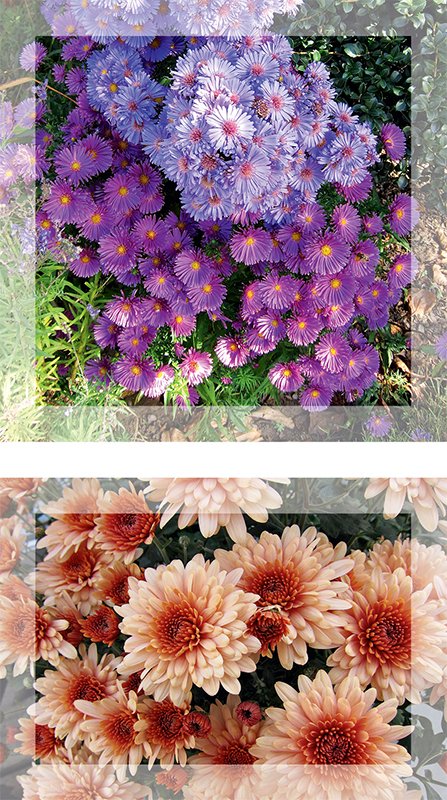September doesn’t have to mean the end of the season for your garden
By Carol Hall
The great Yogi Berra was hardly a gardener, but so what? “It ain’t over till it’s over” is spot-on advice for gardeners in September. Labour Day may signal the end of summer holidays for schoolkids and the wrapping up of camping and barbecuing activities, but summer doesn’t officially end until September 22 this year. By including even a few well-chosen late bloomers, you can easily keep your garden fresh and colourful until at least then.
Annuals and Bulbs
Annuals most likely to be going strong after Labour Day include impatiens, salvia, flowering tobacco, snapdragons, and sweet alyssum, with cosmos and pot marigolds outlasting them all. Dahlias, both the short bedding types and the much taller large-flowered types grown from tubers, keep on blooming at full speed until hard frost, especially if the spent blooms are picked off regularly. And gardeners who had the foresight to plant spider flowers (Cleome) earlier in the summer are now rewarded with the first of many large, airy flowers of white or rose that will bloom afresh until hard frost.
In moderate-winter climates (no colder than -30°C/-20°F), September also heralds the first appearance of three fall-blooming bulbs. Fall crocus, hardy cyclamen, and colchicum are all available in garden centres beginning in late August or early September and will bloom just a few weeks after planting.
Fall-blooming crocuses of purple, white, and lilac (including the saffron crocus, whose stamens are the source of the much-prized spice) look very much like spring-blooming crocuses and are just as welcome. Fall cyclamen grow from odd disk-shaped tubers that get bigger and bigger with time, eventually producing dozens of tiny downward-facing flowers of white or light-to-dark pink that appear without foliage. The beautifully marbled leaves begin to appear as the flowers fade in late October.
Colchicums, which go by the confusing common names of autumn crocus and meadow saffron (they are neither), are the oddest of the lot. They should be purchased as early as possible, since the bright purplish-pink flowers often start emerging from the bulbs before they’ve even left the store shelf. Like paperwhites, they’ll bloom quite happily in a dish of moist pebbles but are best planted in the ground. Flowers appear with nary a leaf in sight, and the foliage, which looks like cornstalks, doesn’t appear until spring. All parts of the plant—bulb, flowers, and seeds—contain a toxin that can cause serious problems if eaten, so this is one to avoid if small children or pets are likely to sample it.
Perennials and More
September is prime blooming time for many tried-and-true perennials, whether they’re continuing from midsummer beginnings or starting afresh. Among the former (all hardy to -45°C/-50°F) are hollyhock, baby’s breath, blazing star (Liatris), blanket flower (Gaillardia), and gooseneck loosestrife (Lysimachia clethroides), whose long, lax, white flower spikes look uncannily like the heads of geese. Don’t be alarmed by the name “loosestrife”: although this plant does spread slowly in moist soil, it’s not related to the noxiously invasive purple loosestrife, which is of a different genus (Lythrum).
Midsummer-blooming purple coneflower, garden phlox, tickseed (Coreopsis), and some astilbes (Astilbe chinensis cultivars) also continue to bloom beautifully and are almost as hardy (to -40°C/F). Russian sage is considerably less hardy (to -30°C), but it’s a welcome addition to late-summer gardens in moderate-winter climates.
Rudbeckias (also called coneflowers) really come into their own in September. Especially outstanding are the short orange-and-brown varieties known as gloriosa daisies (Rudbeckia hirta, to -30°C), the classic border plant R. fulgida ‘Goldsturm’ (to -45°C), and the appropriately named Autumn Sun coneflower (R. nitida ‘Herbstsonne’, to -45°C), which rivals sunflowers in height.
Where winters are no colder than -35°C (-30°F), gardeners can choose from several perennials that begin to bloom in August and continue through September or later. Two, in spite of their slightly off-putting common names, are must-haves at any time of year for their purple foliage and imposing height. Purple-leaf bugbane (Actaea simplex, formerly Cimicifuga ramosa) prefers a woodland setting for its dark foliage (almost black in the variety ‘Brunette’) and contrasting spikes of creamy-white flowers, while Joe-Pye weed (Eupatorium purpureum ‘Atropurpureum’) prefers the sun for its rounded heads of rosy-purple flowers and complementary purplish leaves. Both need rich soil that’s moist to wet.
In moderate-winter gardens (no colder than -30°C), gardeners can also add boldness with the brilliant flowers of blue leadwort (Ceratostigma plumbaginoides), whose foliage turns bright red in fall. Or they can add breathtaking beauty with the flowering shrub “rose of Sharon,” also known as hardy hibiscus (Hibiscus syriacus). Or classic understatement with the nodding pink or white flowers of Japanese anemones (Anemone x hybrida), whose 150-year-old variety ‘Honorine Jobert’ was named Perennial Plant of the Year for 2016 by the US Perennial Plant Association.

Fall sedums, especially purplish-pink Sedum spectabile ‘Brilliant’ and salmon-pink Sedum x ‘Autumn Joy’ (both to -45°C), bloom beautifully through October on their fleshy-leaved stems. Keep these two particular varieties separated, though—their colours clash badly.
Just for fun, plant a few Chinese lanterns (Physalis alkekengi, to -45°C) in a container and enjoy their bright-orange lantern-shaped flowers from late August until frost. But keep them out of small gardens, or they’ll soon take over.
There are many more: bright fall fruits on flowering crab-apple trees and mountain ashes, gorgeous ornamental grasses just coming into their prime, more flowering shrubs, more bulbs, more perennials, more annuals, even vines. So don’t put away the gardening gloves yet. It’s only September and it ain’t over. Not by a long shot.
Photos: Carol Hall.



